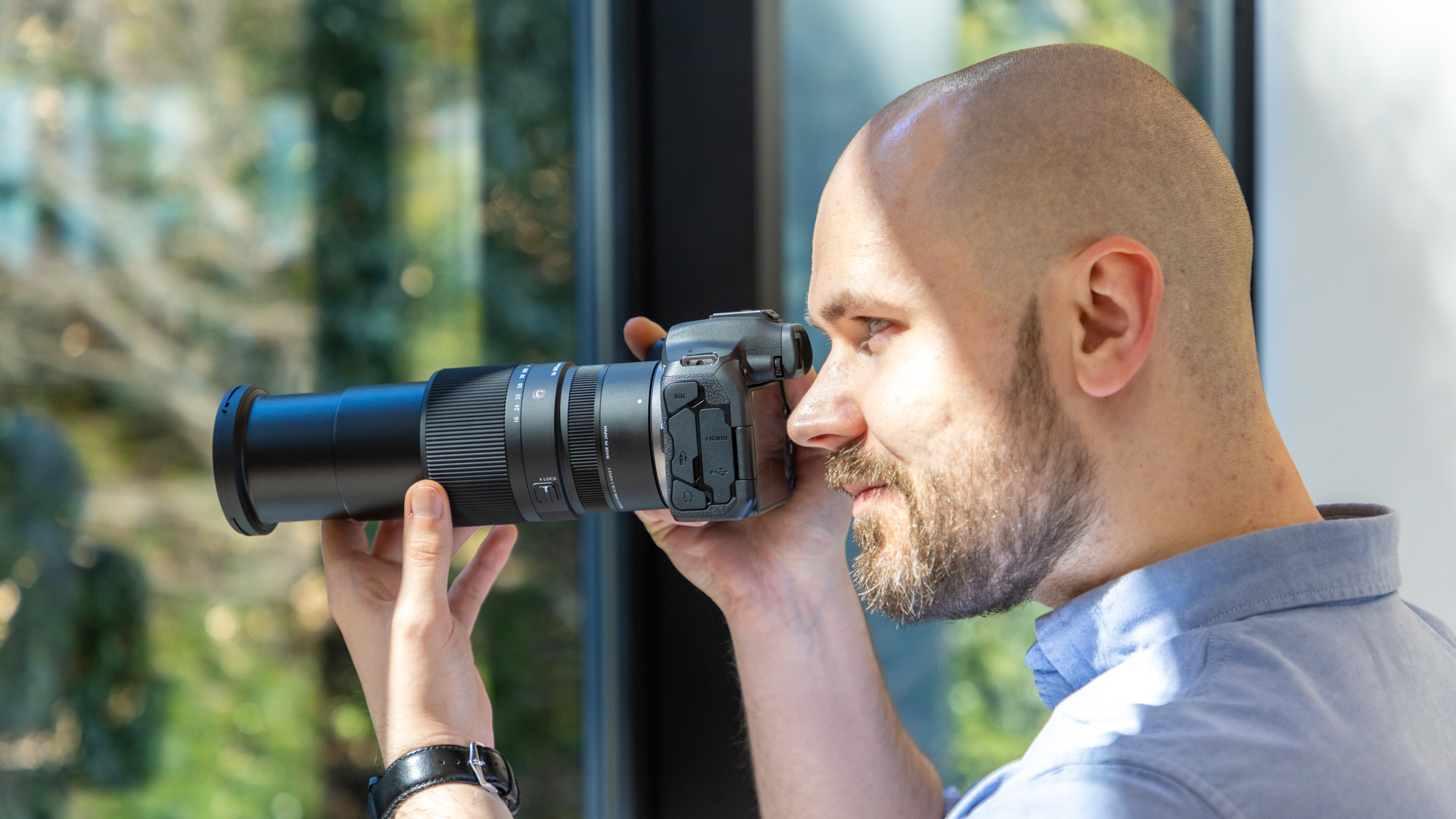Early Verdict
The Sigma 16-300mm f/3.5-6.7 | C is a capable, versatile travel lens that's a great option if you're conscious of size and weight. It gives you a lot of bang for buck with its expansive range and macro functionality, and it fills a useful gap for Canon RF users as there isn't a similar native lens available. It does, of course, prioritize zoom range over optimum image quality, and its f/3.5-6.7 aperture range is a little on the slow side, so you might need to look elsewhere for premium performance. But as an all-in-one travel lens with fast AF and macro capabilities, it's hard to beat.
Pros
- +
Lightweight
- +
Compact
- +
1:2 macro capability
- +
Affordable
- +
Fast and quiet autofocus
Cons
- -
Image quality is good for a superzoom, but not the very best option
- -
Aperture range is a little limiting
- -
Not available for full-frame
Why you can trust Digital Camera World
If you're looking for a lightweight lens that can do everything from super wide-angle landscapes to telephoto wildlife, then the Sigma 16-300mm f3.5-6.7 Contemporary lens could be for you.
The world's first-ever mirrorless lens to boast an 18.8x optical zoom, the Sigma 16-300mm is an APS-C lens available for L-Mount, Sony E, Fujifilm X and, as an EOS R-series user, I was delighted that it's also available for Canon RF.
I tried out the RF mount version on my APS-C Canon EOS R7 and my full-frame EOS R5 in crop mode. As an APS-C lens it has an effective full-frame focal length of 24-450mm on L, E and X cameras (with their 1.5x sensor crop) but it's a 25.6-480mm on Canon RF-S (with Canon's 1.6x crop). So without further ado, here's my initial findings…
Sigma 16-300mm f/3.5-6.7 | C : Specifications
Mount | L-mount, Sony E, Fujifilm X, Canon RF (APS-C) |
Autofocus | Yes, HLA |
Image stabilization | Yes (6 stops at 16mm, 4.5 stops at 300mm) |
Aperture range | f/3.5-22 (16mm) / f/6.7-45 (300mm) |
Macro | 1:2 at 70mm, 1:3 at 16mm, 1:4 at 300mm |
Coatings | Oil and water + anti-reflective |
Aperture blades | 9 rounded |
Filter | 67mm |
Size (DxL) | 73.8x121.4mm |
Weight | 615g |
Sigma 16-300mm f/3.5-6.7 | C : Design & Handling
The lens is nice and compact for an optic that boasts such an expansive zoom range, and is just 121.4mm in length when collapsed down to its 16mm mark. It also has a rather slender cylindrical 73.8mm barrel diameter and takes 67mm filters. The lens also features a physical lock switch to stop any zoom travel when you've stowed it away.
Looking at the rear metal mount shows a rubber seal for dust and moisture resistance, though as one of Sigma's Contemporary lenses it doesn't feature full weather-sealing like its Art series.
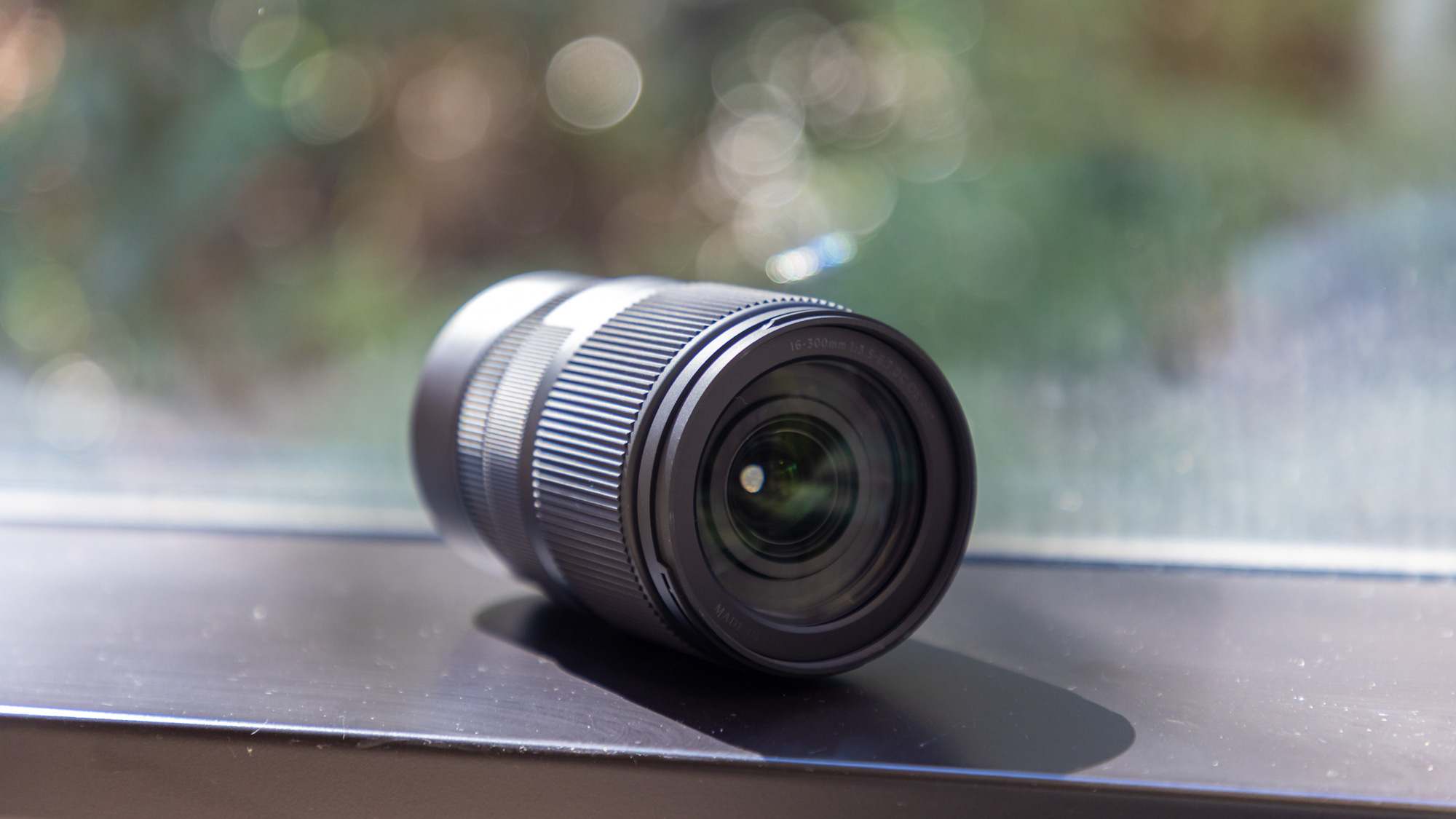
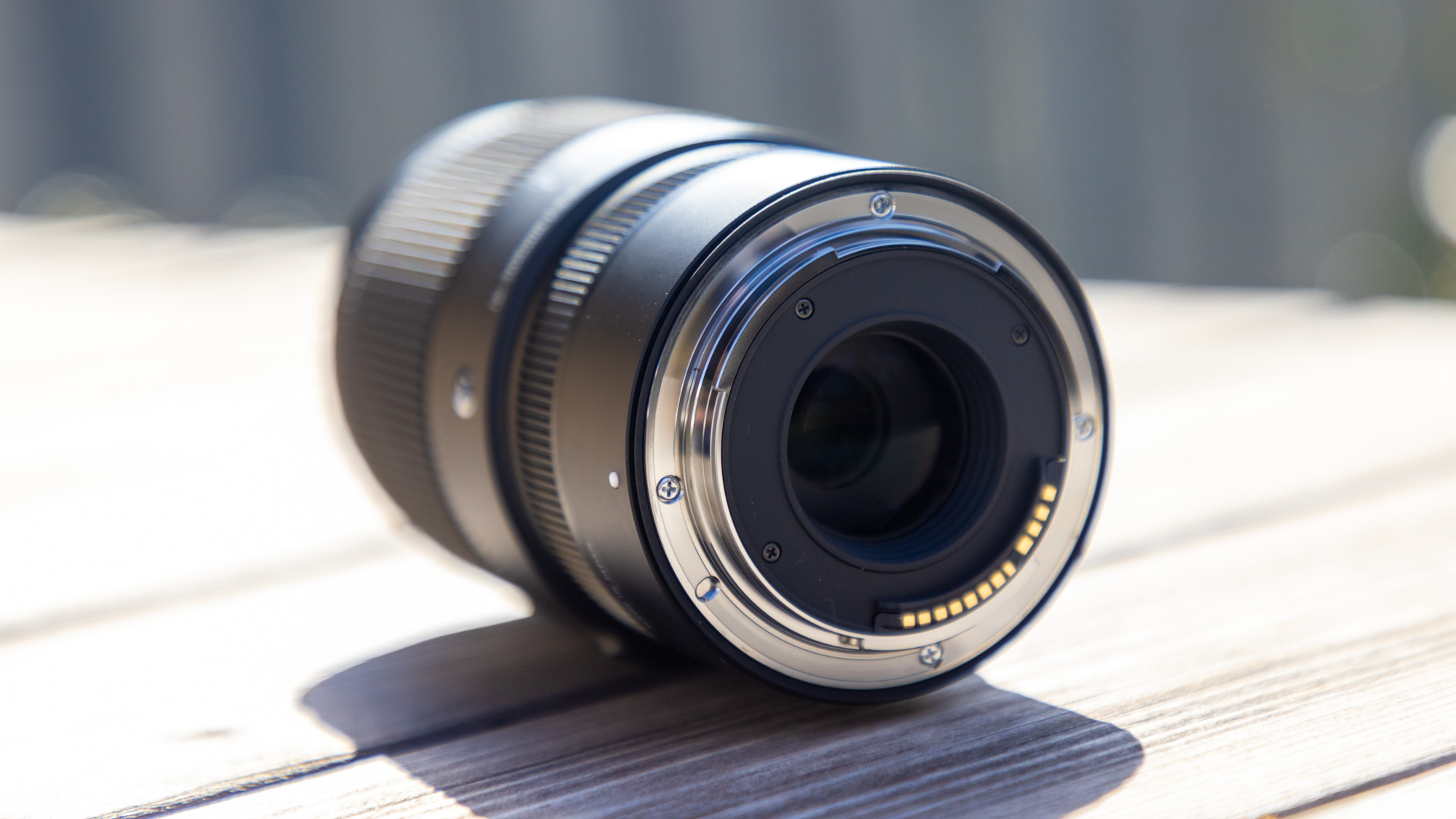
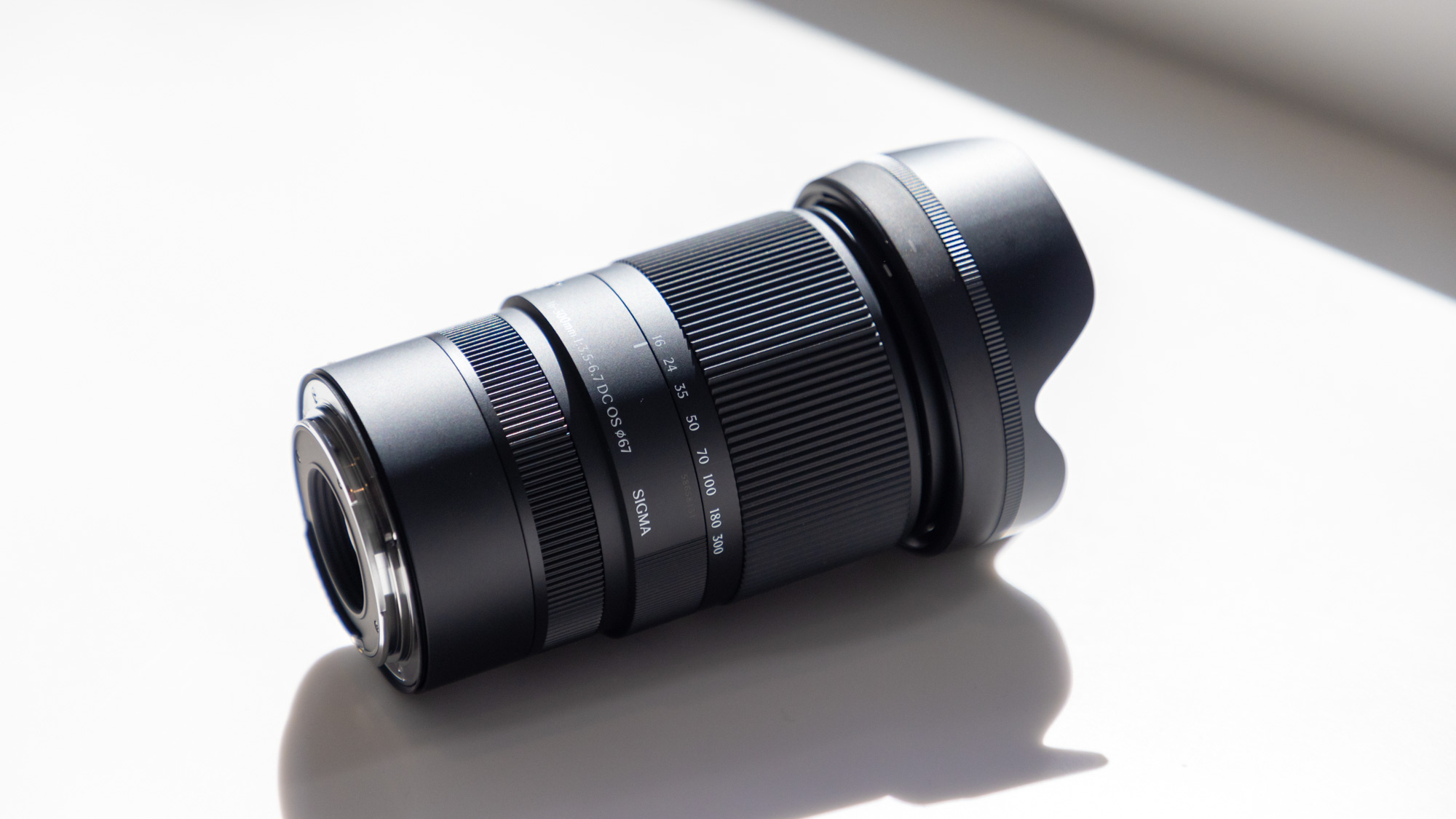
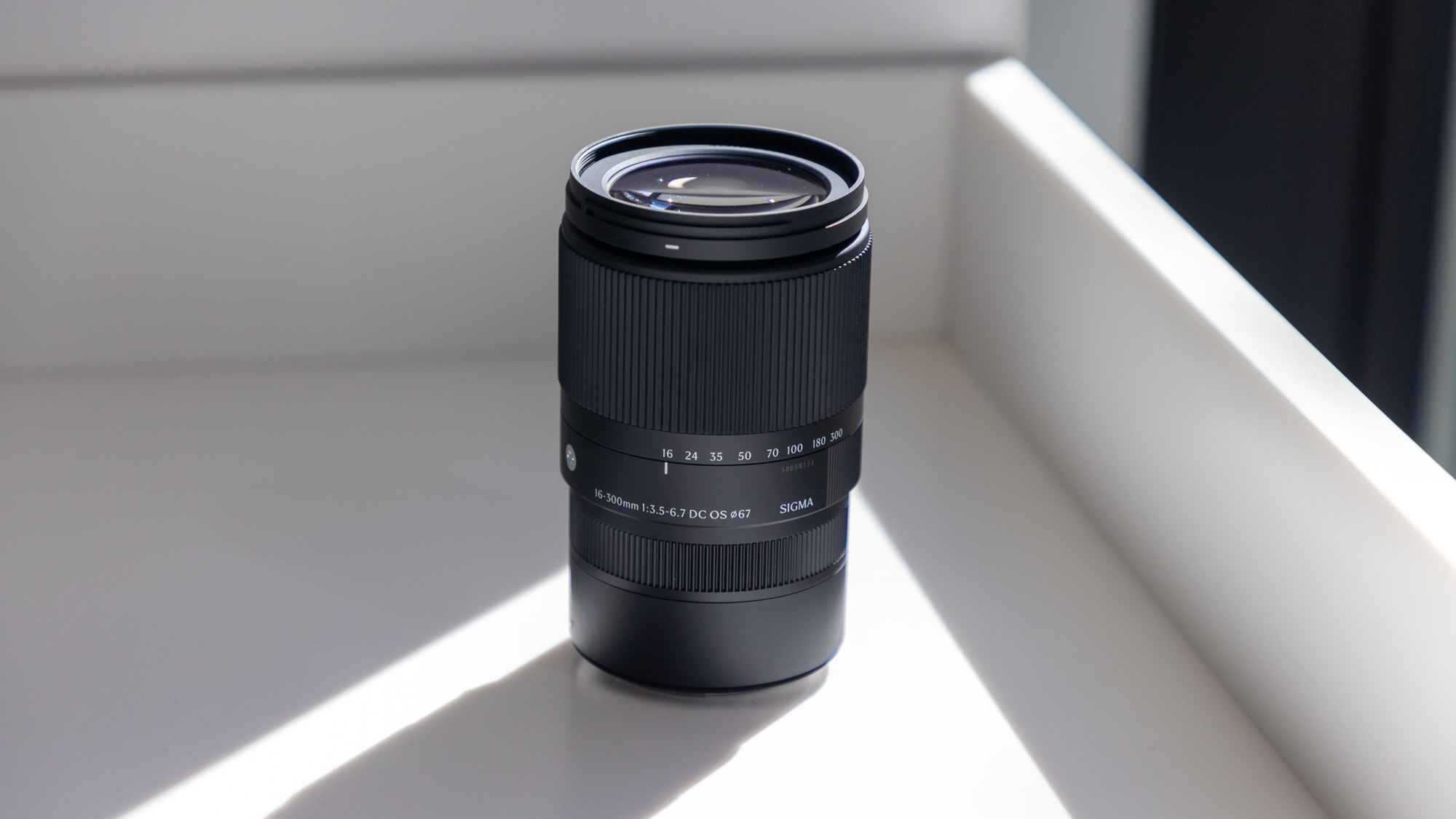
Sigma's 16-300mm f/3.5-6.7 | C is the world's first mirrorless lens to boast an 18.8x optical zoom, and to squeeze such a versatile zoom range into a compact design does inevitably mean the lens racks out when zooming and pretty much doubles in length at the maximum 300mm setting – though it does collapse down very nicely for storage.
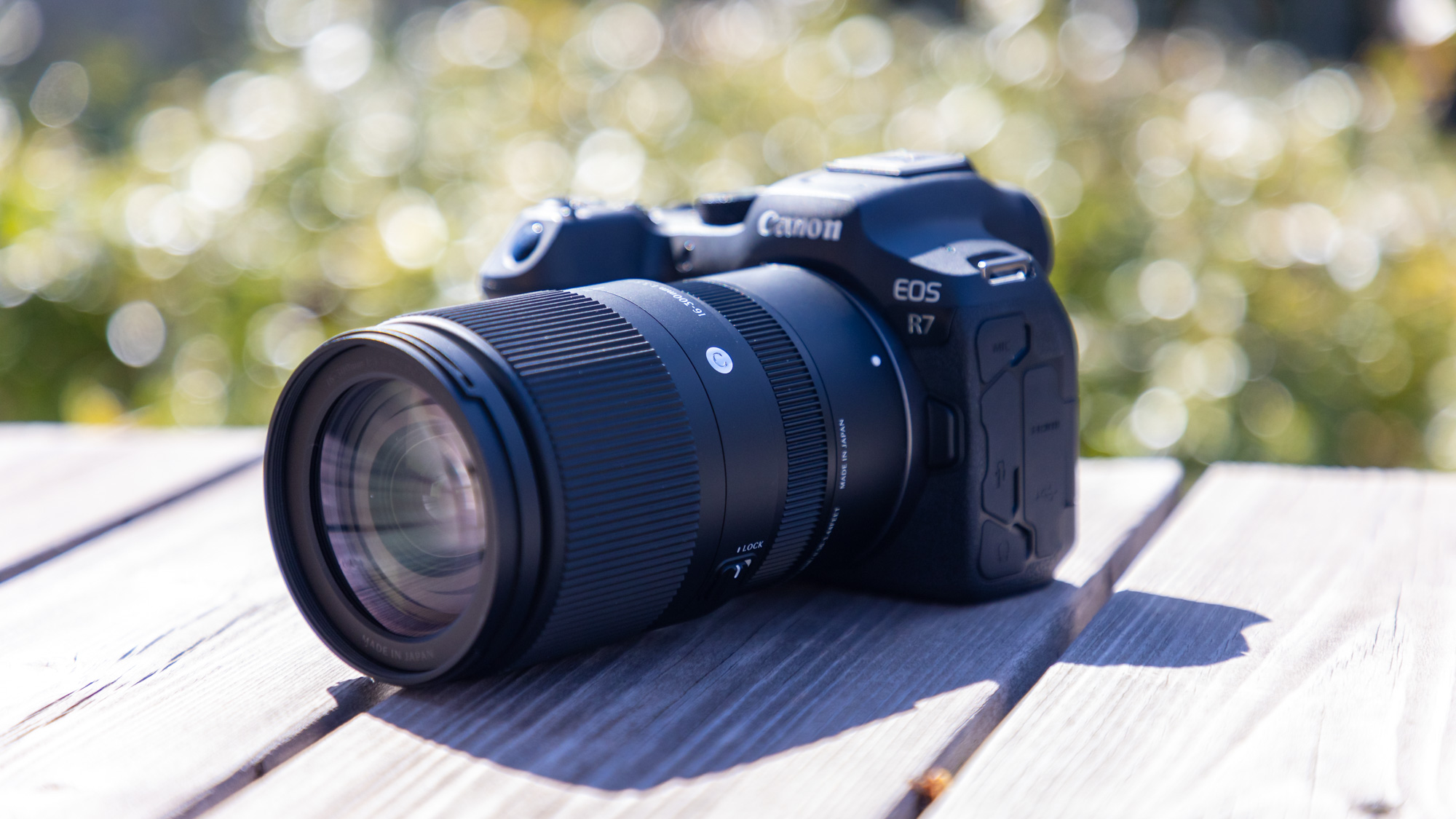
The Canon RF mount version I used has only the Lock switch on the lens barrel – there's no switches for AF/MF or OS modes, which is a bit of a shame. On the EOS R7 you have a phsyical AF switch on the camera body itself, but for other EOS R bodies you'll need to switch between auto and manual focus in menu.
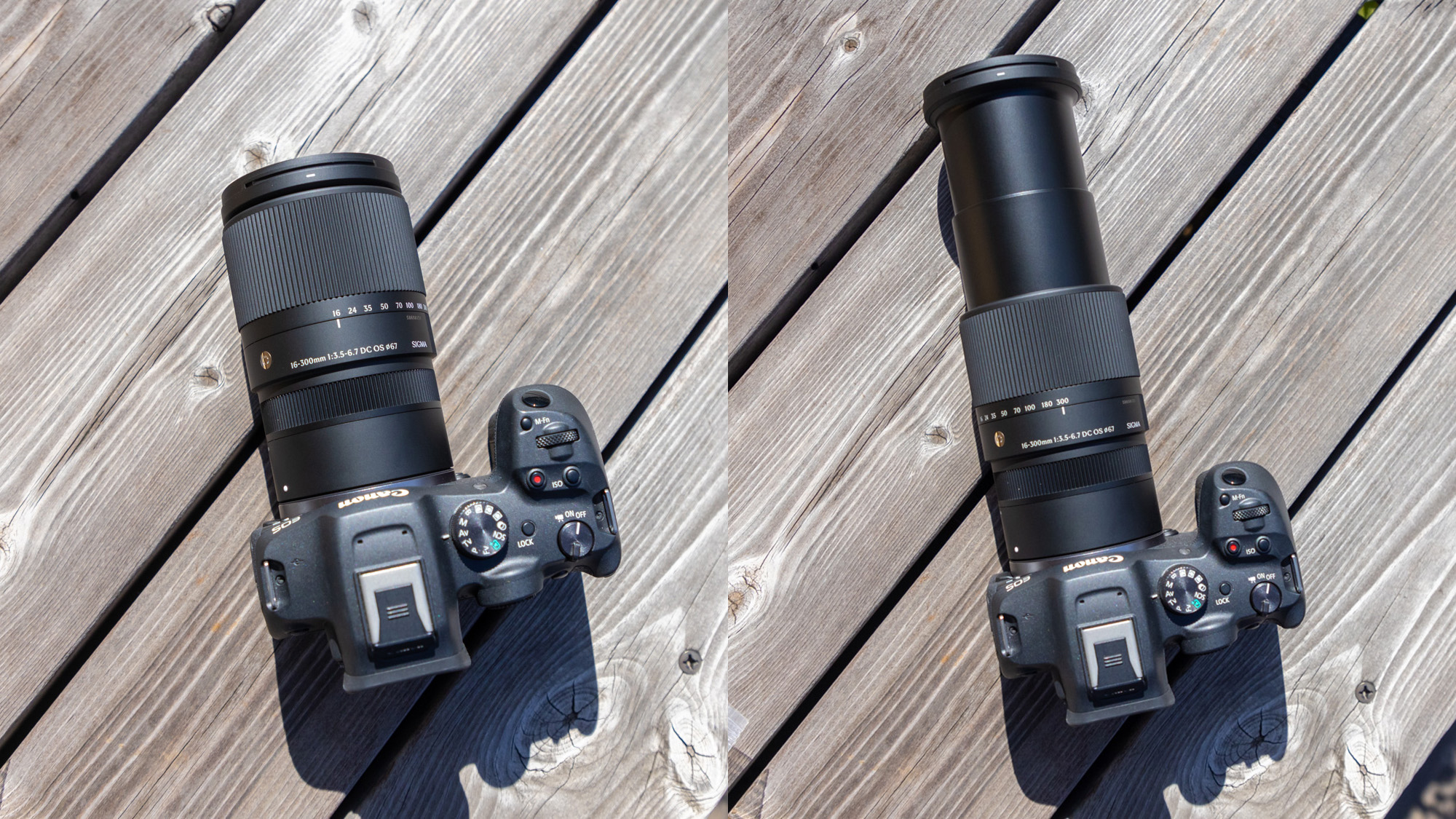
The lens barrel gets slightly wider at the zoom ring, which makes it easier to locate and turn when you have an eye to the viewfinder. The large knurled rubber ring for for the zoom operation makes it grippy and it's very smooth to turn, too.
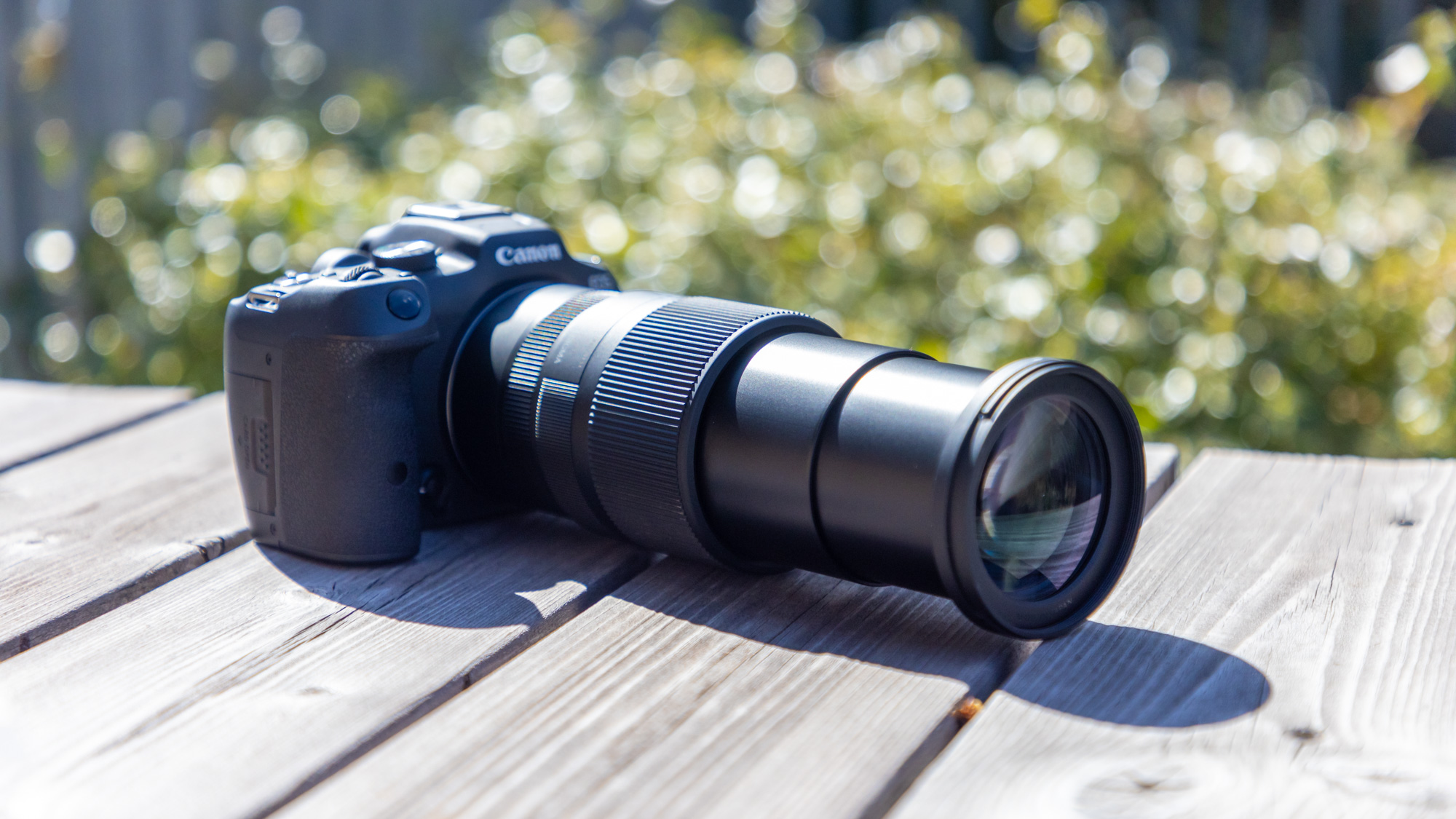
The manual focus ring sits close to the rear mount, presumably because most people will be using autofocus for most everyday scenarios. It is the same electronic fly-by-wire style manual focus ring as found on Canon's RF lenses, though unlike Canon glass there's no control ring. The lens does, however, come bundled with a soft case and plastic lens hood.
Sigma 16-300mm f/3.5-6.7 | C : Performance
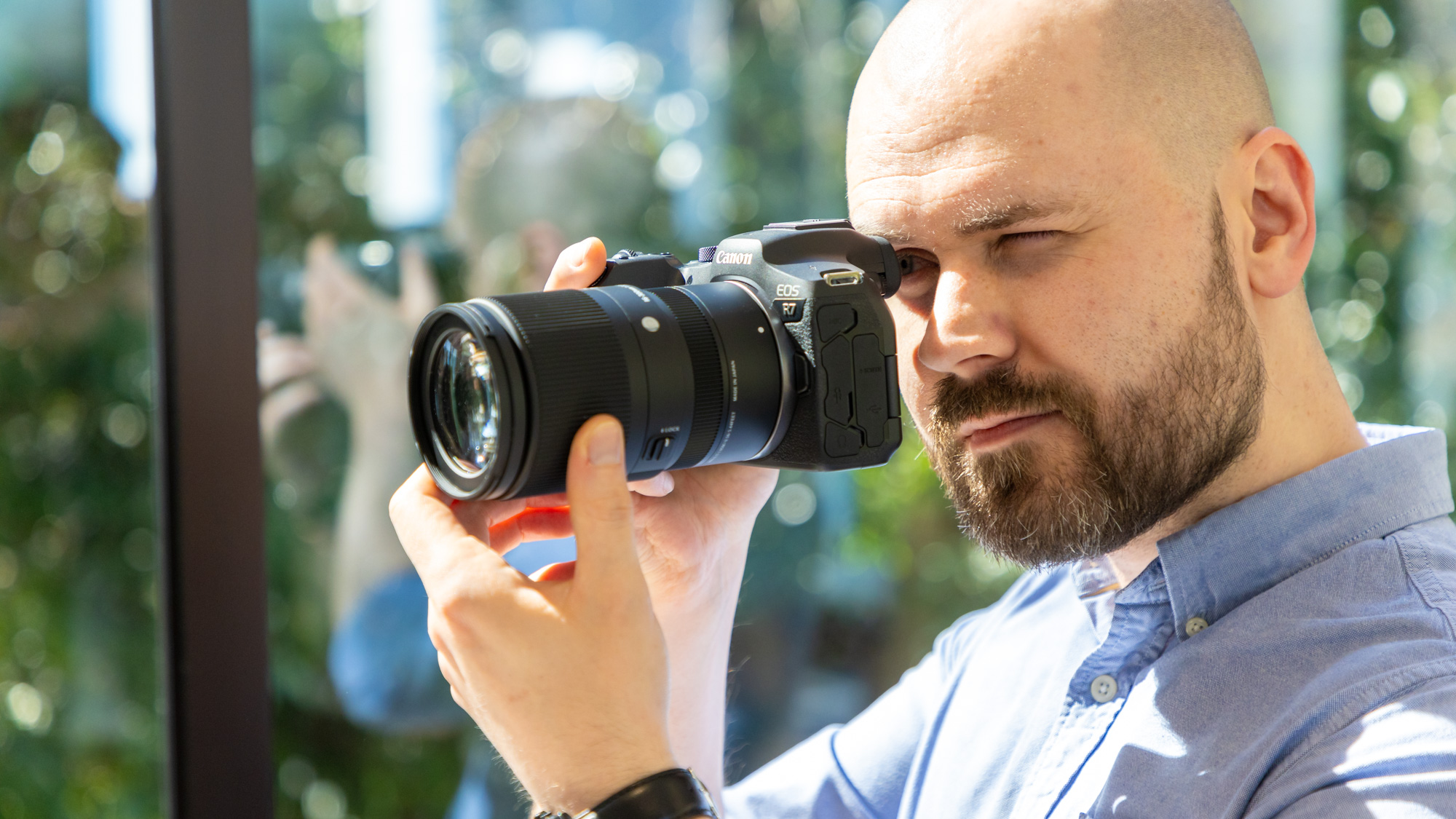
The lens comes packed with Sigma's new OS 2 optical image stabilization system, capable of producing sharper shots with up to 6 stops of stabilization at the wide end or 4.5 stops at the telephoto, end based on CIPA guidelines.
The lens implements a high-response linear actuator (HLA) autofocus motor, and in my tests was very quick, snappy and quiet when focusing on an R7 body. Impressive!

Sigma says the lens excels in macro photography and I had the opportunity to try it out on some colorful crocus flowers that were springing up in the Sigma HQ in Tokyo. To render your subject at the largest available close focus ratio of 1:2 (half life-size), the lens needs to be set to the 70mm mark. It's also worth noting that the maximum magnification is 1:3 at 16mm and 1:4 at the telephoto end.
Personally, I think it would have been a good addition to include some markings on the lens barrel to show the different magnifications at different focal lengths, which was something I liked on the older Sigma 70-300mm f/4-5.6 DG Macro for DSLRs that I used at college.
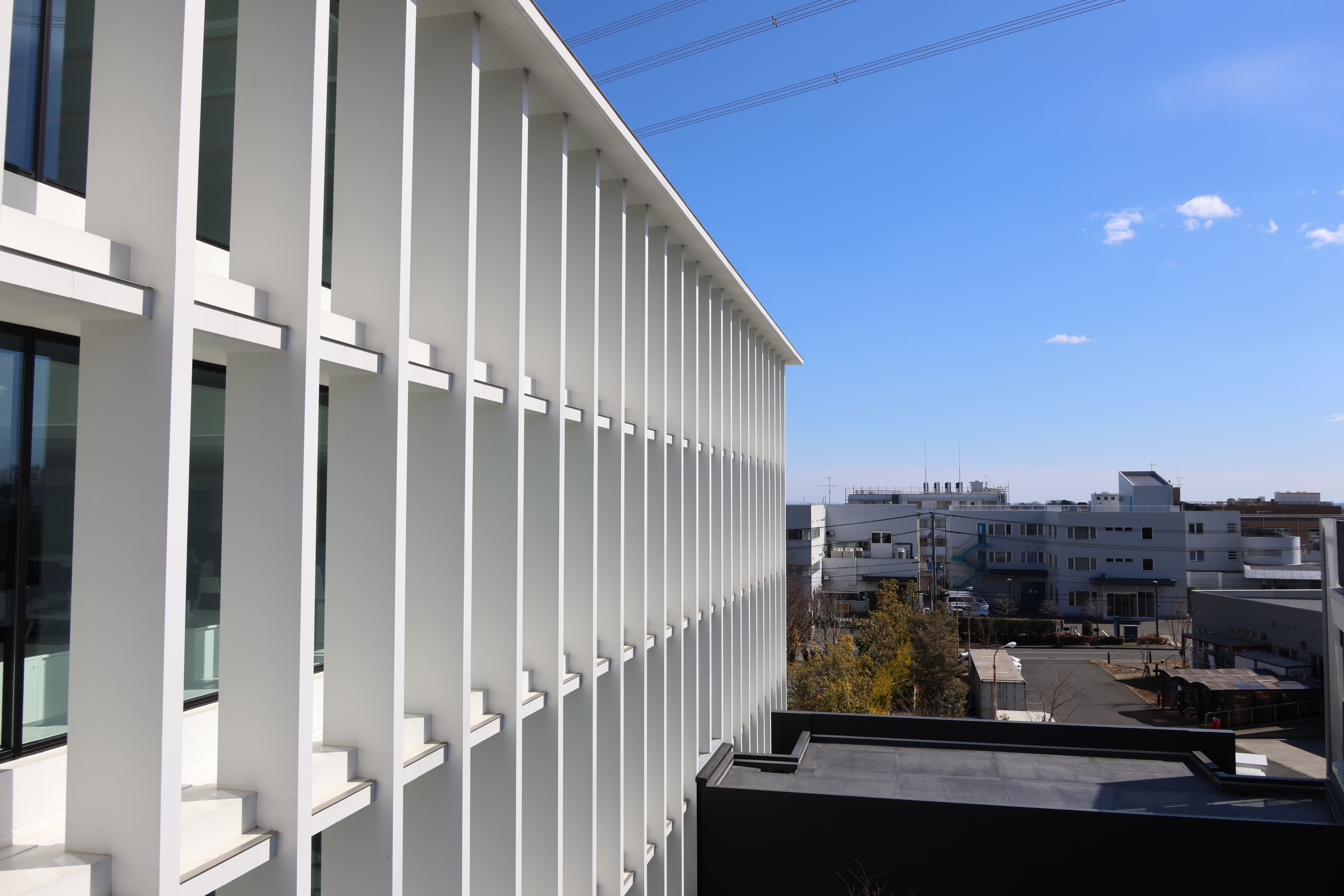
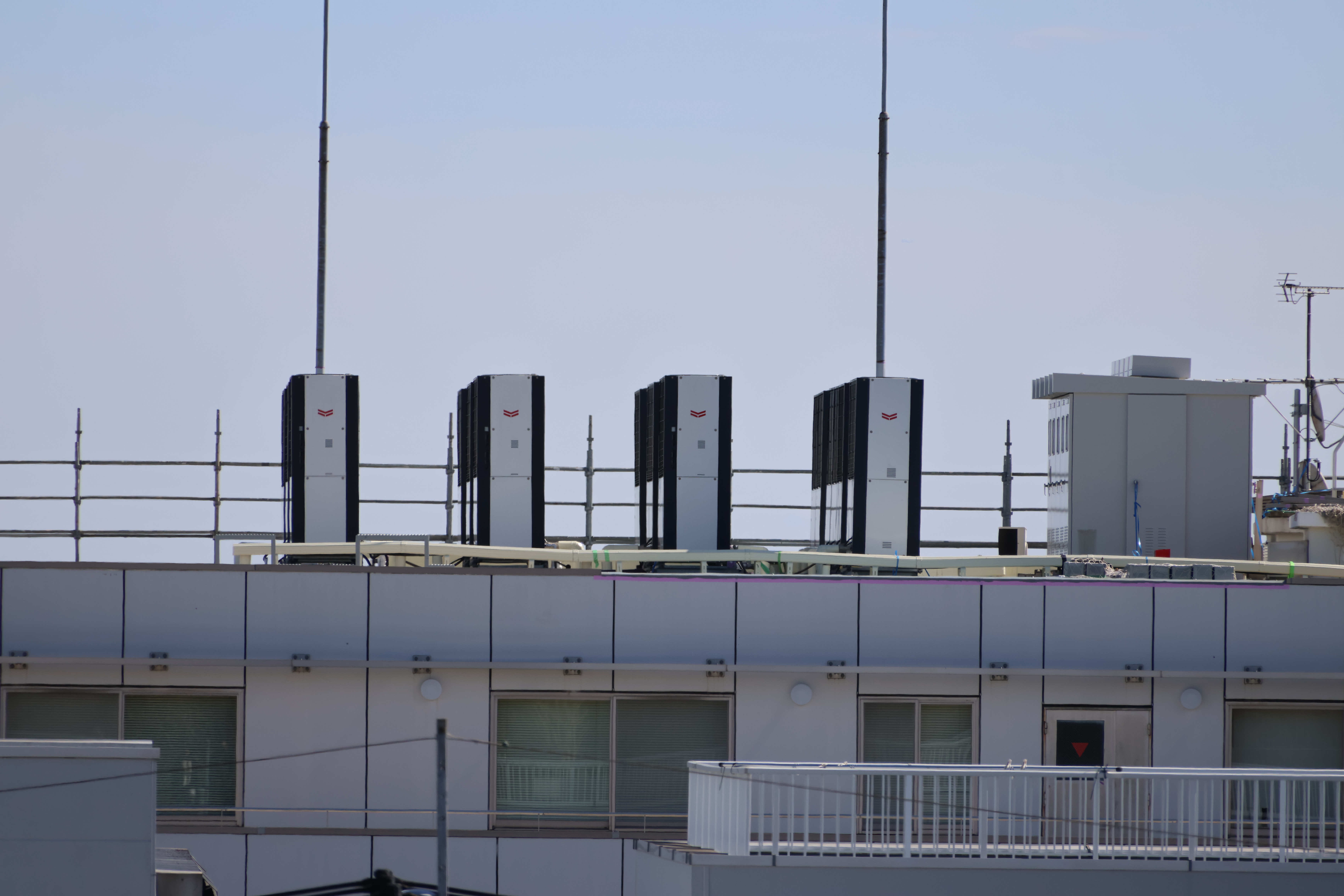
I was able to take some test shots with the new Sigma 16-300mm f/3.5-6.7 | C in both JPEG and RAW to get a better understanding of the lens. Shooting wide at 16mm shows a little barrel distortion and vignetting, which have largely been corrected in the in-camera processed JPEGs of my R7, and zooming in to 300mm showed very little distortion but a little vignetting. Again this was corrected by the in-camera processing on my camera.
I did see a little bit of purple and yellow chromatic aberration (also called fringing), which was present in the JPEGs and RAW files, though it really wasn't too bad considering its quite frankly ridiculous zoom range.
Sigma 16-300mm f/3.5-6.7 | C : Early verdict
I really enjoyed my time in Japan testing out the Sigma 16-300mm f/3.5-6.7 | C. It's a formidable travel lens and really is a brilliant solution if you're short of space (or weight) and only have room to take one lens on your travels. Sigma already has a pedigree for superzoom lenses, with its prior Sigma 18-300mm f/3.5-6.3 C DC Macro OS HSM, though this time goes a little wider making it even more versatile.
I think its price point of $699 / £599 (Australian pricing to be confirmed) is bang on the money, too, and for its expansive zoom range and macro functionality you certainly get a lot of lens for your money.
It's a particularly good investment for EOS R users, where there isn't another lens like it in range. You do of course have the Canon RF 24-240mm and RF 18-150mm but these don't come close in terms of zoom flexibility, though are admittedly more compact options.
The big things to consider with this lens are that it prioritizes zoom range flexibility and versatility over image quality, so if you're looking for the very best top-of-the-line quality then it won't be for you. Its fastest apertures range from f/3.5 at the wide end to a fairly sluggish f/6.7 at the telephoto, so if you're looking to photograph fast-paced sport or blur backgrounds with a wide aperture then this lens won't be the option against say a 50mm f/1.8 lens.
However, if you're in the market for a travel lens that you can keep on all day for landscapes and travel shots, both wide angle at 16mm and zoomed in at 300mm, then it's a brilliant option. Its super fast and quiet autofocus and 1:2 macro capabilities also bolster its value further and make it brilliant value for money.
Should you buy the Sigma 16-300mm f/3.5-6.7 | C?
✅ Buy it...
- You're looking for a versatile travel lens that you can keep on all day
- You have limited space but want to shoot wide landscapes, distant subjects and macro
🚫 Don't buy it...
- You're looking for a razor sharp lens – you'd be better off with a high quality prime
- You need fast and wider apertures for shallow depth of field effects
See the new 16-300mm zoom for yourself on the Sigma stand at The Photography & Video Show 2025, where they'll be on show to the public for the first time outside Japan.
Book your ticket to The Photography & Video Show and save 20%
The Photography & Video Show 2025 is at the London Excel exhibition center, running for four days from Saturday, March 8 to Tuesday, March 11. It is open 10:00 to 17:00 every day. You'll find everything you need to know here.
The Photography & Video Show is presented by Future plc, which is also the parent company of Digital Camera World.
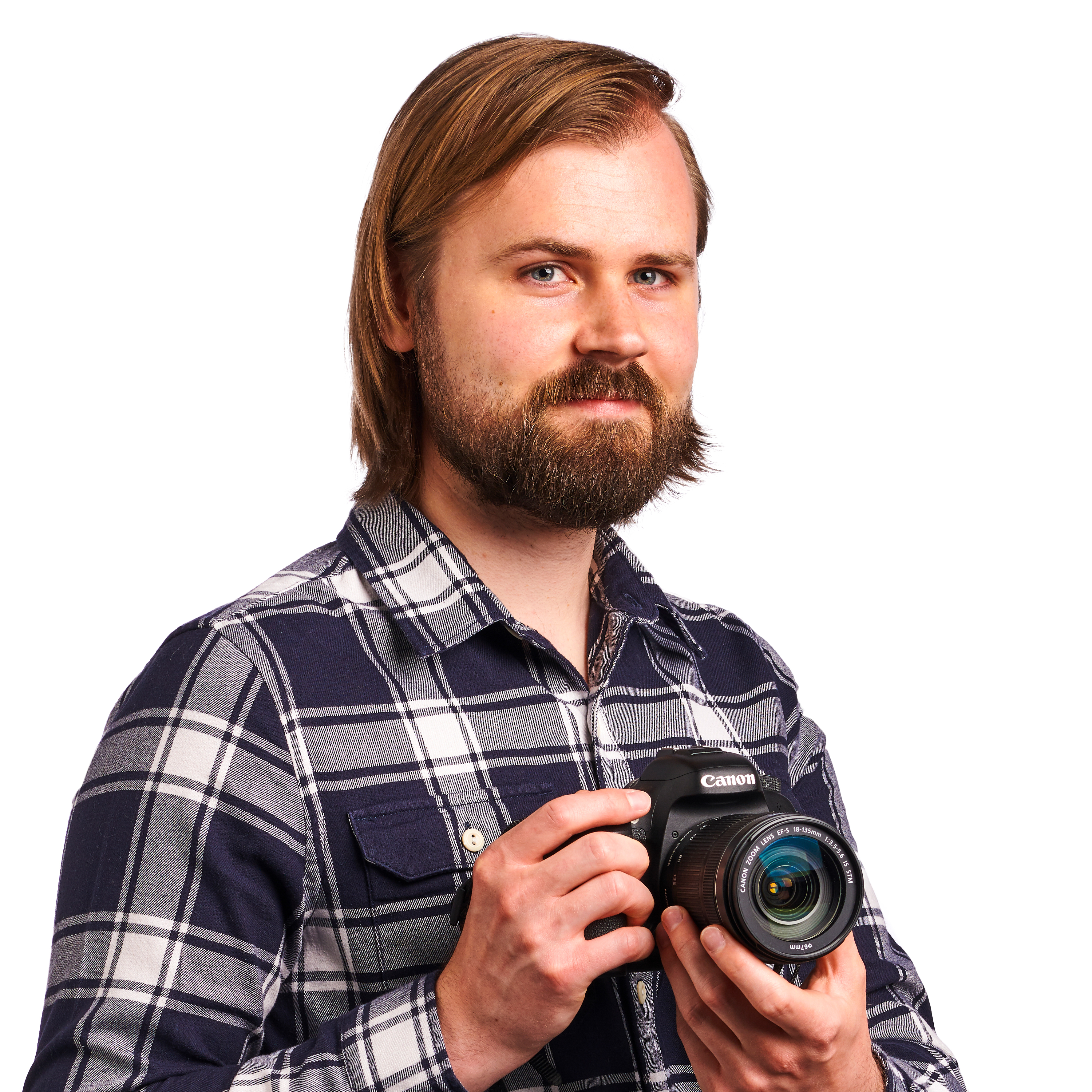
Deputy Editor on PhotoPlus: The Canon Magazine, Dan also brings his technical wizardry and editing skills to Digital Camera World. He has been writing about all aspects of photography for over 10 years, having previously served as technical writer and technical editor for Practical Photography magazine, as well as Photoshop editor on Digital Photo.
Dan is an Adobe-certified Photoshop guru, making him officially a beast at post-processing – so he’s the perfect person to share tips and tricks both in-camera and in post. Able to shoot all genres, Dan provides news, techniques and tutorials on everything from portraits and landscapes to macro and wildlife, helping photographers get the most out of their cameras, lenses, filters, lighting, tripods, and, of course, editing software.
You must confirm your public display name before commenting
Please logout and then login again, you will then be prompted to enter your display name.
